Το καλάθι σας
Το καλάθι σας είναι άδειο
Ειδήσεις Για Την Εταιρεία Μας
Τα Μπαχαρικά μας
Η ζάχαρή μας
Τα Καπάκια μας
-
 Crown Caps 26mm TFS-PVC Free, Gold col. 2311 (10000/box)
Προσθέστε
Crown Caps 26mm TFS-PVC Free, Gold col. 2311 (10000/box)
Προσθέστε
-
 Kegcaps 64 mm, Beige 65 Sankey S-type (EU) (1000/box)
Προσθέστε
Kegcaps 64 mm, Beige 65 Sankey S-type (EU) (1000/box)
Προσθέστε
-
 Kegcaps 74 mm, Red 102 Flatfitting A-type (700/box)
Προσθέστε
Kegcaps 74 mm, Red 102 Flatfitting A-type (700/box)
Προσθέστε
-
 Kegcaps 64 mm, Red 56 Sankey S-type (EU) (1000/box)
Προσθέστε
Kegcaps 64 mm, Red 56 Sankey S-type (EU) (1000/box)
Προσθέστε
-
 Kegcaps 74 mm, Green 147 Flatfitting A-type (700/box)
Προσθέστε
Kegcaps 74 mm, Green 147 Flatfitting A-type (700/box)
Προσθέστε
Γλωσσάριο
Malt extract which has been manufactured with a percentage of dark crystal and/or roasted malt, giving it a dark color and a caramel and/or roasted flavor.
A naturally occurring, soft, chalk-like sedimentary rock that is easily crumbled into a fine white to off-white powder. This powder has an abrasive feel, similar to pumice powder and is very light, due to its high porosity. DE can be used during the filtration process to remove impurities from beer.
To remove carbonate and bicarbonate ions from water, either by boiling or by adding chemicals.
A traditional German method of mashing, in which mutliple temperature rests are employed. The boost from one rest temperature to the next is achieved by removing a portion of the mash, boiling it in a separate vessel, then returning it to the main part of the mash.
A measure of yield used by homebrewers: the specific gravity of one gallon of wort made from one pound of malt.
The molecule that carries the genetic information for most living systems. The DNA molecule consists of four bases (adenine, cytosine, guanine, and thymine) and a sugar-phosphate backbone, arranged in two connected strands to form a double helix. See also Complementary DNA; Double helix; Recombinant DNA.
The home brewery founded by Jake McWhirter. The name of the brewery is a reference to Deuteronomy 14:26 in the bible where God tells His people to buy alcoholic drink and enjoy it while worshiping Him. The motto of the brewery is "Fine Beer Brewed to the Glory of God".
An amylolytic enzyme that breaks down the 1-6 bonds that hold dextrins together.
Dextrinizing units (DU) or alpha-amylase: While DP gives a ratio for all amylases present in the malt, DU breaks out alpha-amylase. A range of 35-50 DU (dextrinizing units) is acceptable, depending on the malt type and the mash program. Munich malt may be below 10, and pale malts may be as low as 25.
Equivalent to glucose, but with a mirror-image molecular structure.
The term used to refer to all enzymes in barley and malt involved in the conversion of starch to sugar during mashing.
The amount of diastatic enzyme potential that malt contains.
Micro fine single-cell fossil material made of almost pure silica, used in the filtering of beer.
Aromatic, volatile, compound perceivable in minute concentration, from yeast or pediococcus metabolism. Most significantly the butter flavor of diacetyl.
A tube, usually made from metal, which extends from a fitting on the top of a keg, down into the body of the keg. On a standard soda keg, the dip tube on the "out" fitting extends all the way to the bottom of the keg, allowing beer to be drawn off. The dip tube on the "in" fitting is short, and is used to inject CO2 into the headspace.
A sugar molecule consisting of two simple sugars (monosaccharides) linked together. Maltose (malt sugar) and sucrose (table sugar) are both examples of disaccharides.
Ionizes
The process of heating a liquid to its boiling point, then condensing the vapors. Can be used as a method for purifying water, or as a means of concentrating the alcohol in a fermented beverage to create hard liquor (since alcohol boils at a lower temperature than water). Home distillation of alcoholic beverages is illegal in the US (and many other countries).
Water which has been purified by boiling, and condensing the resulting steam. Distilled water can be used for brewing if the local tap water is unsuitable, but it may not contain sufficient trace minerals for good yeast health.
Dry malt extract. (See malt extract).
A background flavor compound that is acceptable in low amounts in lagers, but that at high concentrations is the sign of bad beer. DMS can be caused by a dormant boil (as opposed to a vigorous one), a slow start to fermentation, or an extended delay between the end of the boil and the cooling to ideal fermentation temperature. DMS often grows in plate heat exchangers. The defining flavor characteristic of DMS is that of cooked vegetables, creamed corn, oysters, or tomato juice.
Translates to "doublebock" in German, this beer is an extra strong version of bock. Traditionally, the names of all doppelbocks end in -ator as in Celebrator (brewed by Ayinger) or Optimator (brewed by Spaten).
The adding of yeast right before the bottle conditioning of a beer. This is also done with champagne.
A bottle, 3.0 liters in capacity.
A procedure in which two separate mashes are mashed-in simultaneously. The first is all malt and is comprised of about 90 percent of the recipe's total malt and is raised to 122° F (50° C). The second mash consists of the remainder of the recipe's malt and all of the adjuncts. This mash is brought up to 158° F (70° C) and held for about 15 minutes to allow alpha amylase action to occur. The adjunct mash is then boiled for about 20 minutes and added to the main mash so the resulting temperature is 158° F (70° C). Double mashing ensures the adjunct starch is completely converted.
The gradual addition of water to crushed malt to create a uniformly moistened grain and water solution. Doughing-in is used to prevent the formation of dry spots in the mash.
The material remaining in the lauter tun after sparging.
The process of dispensing beer from a bright tank, cask or, keg, by hand pump, pressure from an air pump or, injected carbon dioxide inserted into the beer container prior to sealing.
Beer in a keg, and dispensed through a faucet rather than in a bottle or can. The beer can be pasteurized or non-pasteurized, but should always be stored at and served at a Brewer's recommended temperature to ensure maximum drinking pleasure.
See Draft Tower.
Also referred to as a Standard or a Font. This is the unit on the top of the bar or the kegerator holding the faucet in place (the point of dispense). Inside the tower are the beer lines and in some cases the glycol cooling lines. Towers can come in a variety of shapes and sizes, and can hold as few or as many faucets as desired. Towers may be made from a variety of materials such as brass or stainless steel. Some may have an LCD screen built into them like the Micro Matic vPOD.
See Draft Beer
Wort which has had nearly all of the water removed, turning it into a powder. When rehydrated (mixed with water), dried malt extract yields approximately 45 points of specific gravity per pound, per gallon of wort. Generally available in Extra-Light, Light, Amber, and Dark. May also be available in pre-hopped form, and in a wheat version.
A catch basin placed below a faucet to capture spilled beer. Drip Trays are available in a variety of shapes and sizes and are made from a variety of materials such as stainless steel, brass and plastic. Metal drip trays can have a polished or brushed finish. It is recommended to connect the Drip Tray to a drain system.
In the late 80's, Asahi Brewery of Japan refined a brewing process that fermented virtually all the sugars in their beer. Described as having less aftertaste, it actually had almost no taste at all. It sold well, though, so major breweries around the world began brewing "Dry Beers" of their own.
A powdered form of malt, formed by dehydrating malt extract.
The Irish version of stout, slightly more bitter and higher in alcohol than the English sweet stout.
Die bekanntesten Stouts auf der Welt sind Dry Stouts. Diese sind von herbem Charakter, tiefschwarz in Farbe, mit vollmundigem Aroma und cremigem Schaum und kommen aus Irland. Die bekanntesten irischen Dry Stouts sind Guinness, Beamish und Murphy. Gute Dry Stouts werden natürlich auch außerhalb Irlands gebraut, sind jedoch lang nicht so bekannt.
The addition of dry hops to fermenting or aging beer to increase its hop character or aroma.





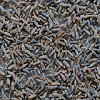
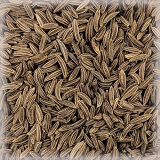
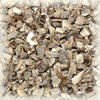
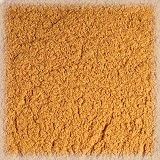
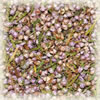
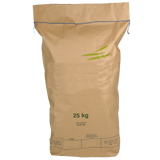
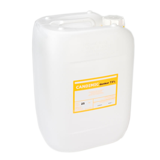
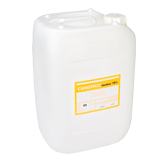
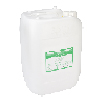
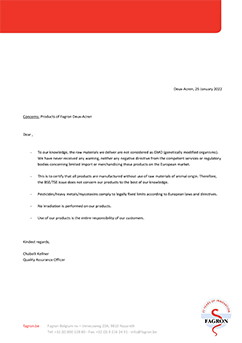 Fagron Spices, GMO-free Certificate 2022
Fagron Spices, GMO-free Certificate 2022
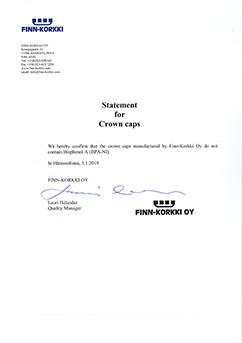 Crown Caps Finnkorkki Statement
Crown Caps Finnkorkki Statement
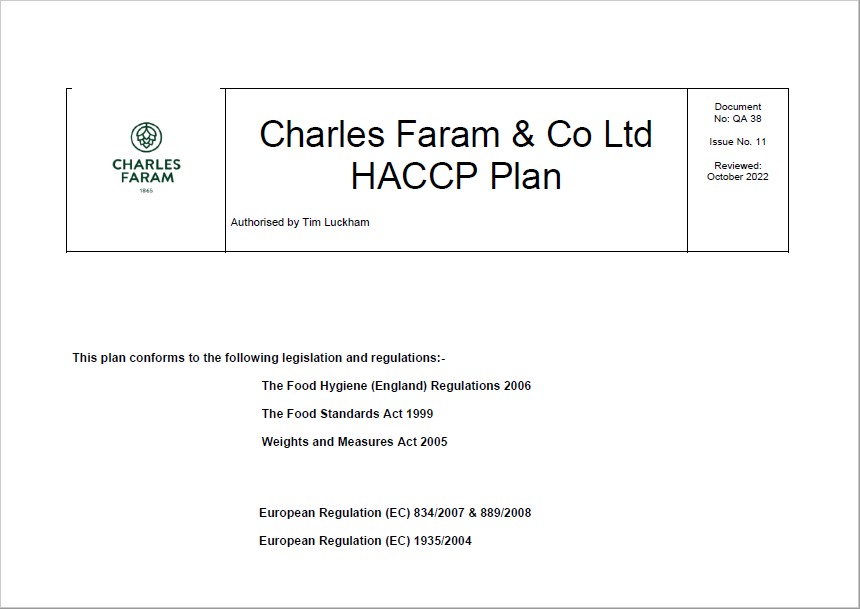 Charles Faram Hops, HACCP Plan QA38, EN 2022
Charles Faram Hops, HACCP Plan QA38, EN 2022
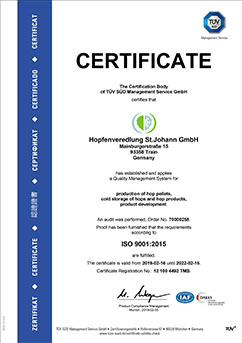 Hops Hopfenveredlung St.Johann, Certificate ISO 9001:2015 2022-2025
Hops Hopfenveredlung St.Johann, Certificate ISO 9001:2015 2022-2025
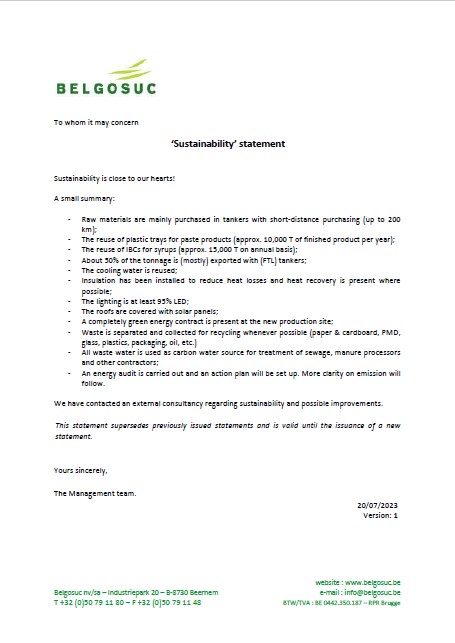 Belgosuc Sugar, Sustainability certificate 2023
Belgosuc Sugar, Sustainability certificate 2023



